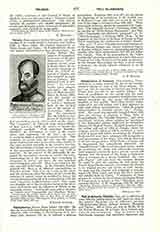

Tell el-Amarna Tablets, THE, are a collection of some 350 clay tablets found in 1887 amid the ruins of the ancient Egyptian city of Akhetaton (modern Tell el-Amarna) about midway between Memphis and Thebes. 200 of them are now in Berlin, 82 in the British Museum, 50 in Cairo, 22 in Oxford; only a few are private property. They are written in the Babylonian language and cuneiform characters and date from the fifteenth century B.C. They consist mostly of letters and State records sent to Kings Amenhotep III and Amenhotep IV of Egypt, by rulers of Western Asia (Babylonia, Assyria, Mittani) and provincial governors of Amurru (Northern Syria) and Canaan (Palestine). All these documents throw considerable light on the conditions of Western Asia from about 1500 to 1300 B.C.; they contain most precious information concerning the history, geography, religion, and language of the predecessors and contemporaries of the Hebrews in Palestine, and, in many cases, illustrate and confirm what we already know from the Old Testament.
A. A. VASCHALDE

